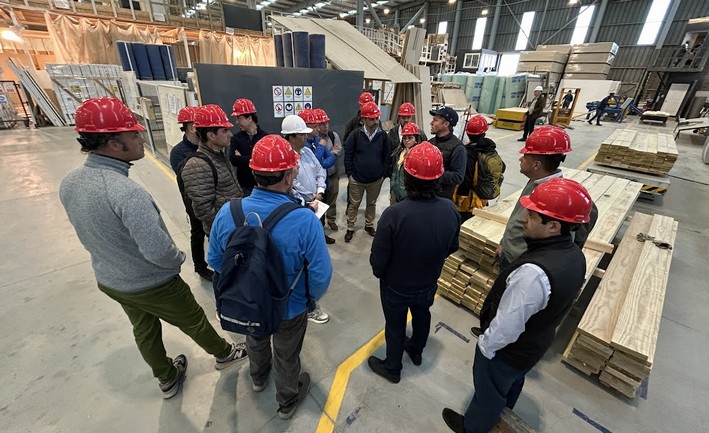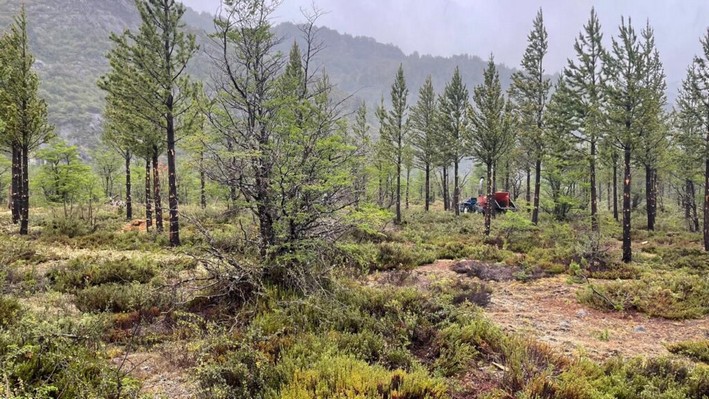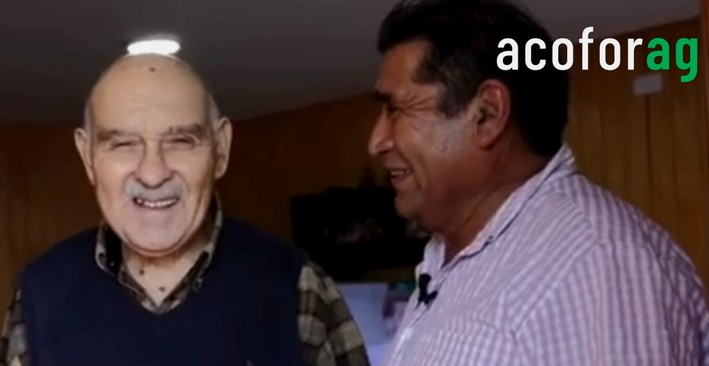Planned Attack on Facilities Designed to Prevent Forest Fires Reported
•The company explained that replacing the tower toppled in the attack could take several weeks.
Two attacks on surveillance systems intended to prevent forest fires occurred this week in the rural area of Biobío, according to reports from the affected forestry company. They explained that in one incident, a tower was knocked down, while in the other, criminals broke a lock, entered a cabin linked to another structure, and stole equipment. Preliminary estimates place the damages at over $120 million.
These violent actions coincide with the upcoming start of the highest-risk period for recurring disasters, which peaks during spring and summer months.
The forestry company Arauco, targeted in both attacks, detailed that an installation on Cerro Caipo, south of the commune of Florida, near the border with Yumbel and Hualqui, was affected on Thursday. Radio communication equipment, cables, batteries, and panels were stolen from a cabin adjacent to the surveillance tower. "We now have two incidents that have impacted highly complex communication systems, which are essential for fire prevention and combat," explained Guillermo Mendoza, Public Affairs Deputy Manager.
The executive urged authorities "to deploy all necessary resources to enhance security" in the area, as the stolen equipment "forms the foundational system for facing the approaching fire season."
Biobío Governor Rodrigo Díaz confirmed both incidents, describing the situation as "extremely dangerous." He noted that "the winter was very rainy, leading to abundant and tall grass, making it difficult to reduce the combustible mass that endangers residents" in these areas. The regional authority called on the Interior Ministry "to take precautions and increase patrols to prevent cable theft and the destruction of fire detection towers—anything that could leave us without disaster protection systems." He also recalled the human and economic losses caused by the rapid spread of fires in past seasons.
Replacement could take several weeks
When asked about the total fire surveillance equipment deployed in the southern zone, the Chilean Wood Corporation (Corma), representing forestry companies, detailed that these are located in 244 sites and consist of 159 cameras, 75 towers, and 10 mixed setups with both systems.
Replacing the tower toppled in the attack could take several weeks, the company explained, as they must be custom-made "based on the frequency required for the area." Additionally, some electronic components are sometimes unavailable and must be specially ordered.
Response capacity
Corma’s president for Biobío and Ñuble, Alejandro Casagrande, emphasized that these acts "threaten the safety of our communities, neighbors, forests, and all of nature." He stressed that the incidents "damaged critical infrastructure and compromised the response capacity of our fire detection, prevention, and combat system ahead of seasonal emergencies."
In his view, "both events occurred just as the period with the highest fire recurrence is about to begin, which should serve as an alert for all institutions capable of preventing and stopping such occurrences."
Meanwhile, local congressman and member of the Senate Defense Committee, Gastón Saavedra (PS), confirmed that the damaged facilities constitute critical infrastructure.
"Leaves a warning light on"
"Owners of these systems will need to implement a security plan for their protection, as will be outlined in the Critical Infrastructure Law," he argued. "At the same time, of course, there must be coordinated efforts between police, intelligence agencies, and military and security forces to develop a strategy for safeguarding this infrastructure."
The legislator shared concerns that "these attacks share a common target—the towers that help us anticipate summer fires—and thus, this leaves a warning light on."
Senator Saavedra called on forestry companies "to provide all available information to pursue and penalize those responsible for these damages."
Source: subscription edition ofEl Mercurio










